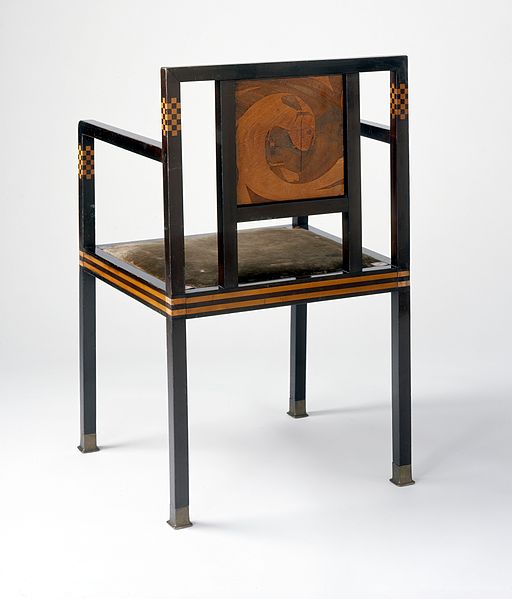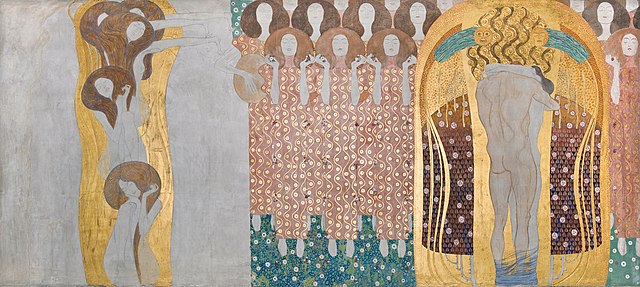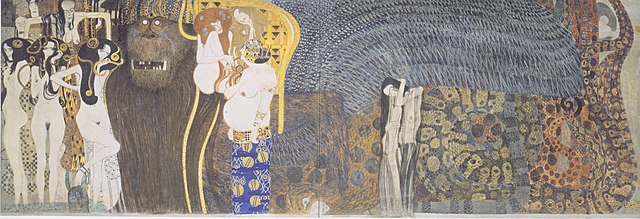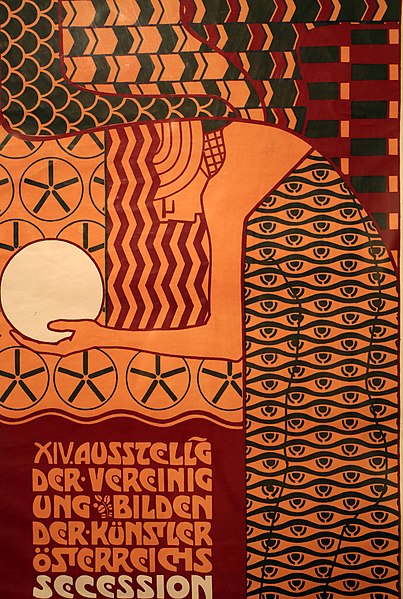Koloman Moser was an Austrian artist who exerted considerable influence on twentieth-century graphic art. He was one of the foremost artists of the Vienna Secession movement and a co-founder of Wiener Werkstätte.
Photograph of Koloman Moser (1905)
Bookcase
Inlaid Armorie
Armchair
The Vienna Secession is an art movement, closely related to Art Nouveau, that was formed in 1897 by a group of Austrian painters, graphic artists, sculptors and architects, including Josef Hoffman, Koloman Moser, Otto Wagner and Gustav Klimt. They resigned from the Association of Austrian Artists in protest against its support for more traditional artistic styles. Their most influential architectural work was the Secession exhibitions hall designed by Joseph Maria Olbrich as a venue for expositions of the group. Their official magazine was called Ver Sacrum, which published highly stylised and influential works of graphic art. In 1905 the group itself split, when some of the most prominent members, including Klimt, Wagner, and Hoffmann, resigned in a dispute over priorities, but it continued to function, and still functions today, from its headquarters in the Secession Building. In its current form, the Secession exhibition gallery is independently led and managed by artists.

Image: Secession 2016, Vienna
Image: Gustav Klimt Beethovenfries, "Die Künste", "Paradieschor" und "Umarmung" (Tafel 8, rechte Langwand) 5987 8 Österreichische Galerie Belvedere
Section of the Beethoven Frieze by Gustav Klimt in the Secession Building (1902)
Poster for the 14th Secession Exhibit (1902), by Alfred Roller








